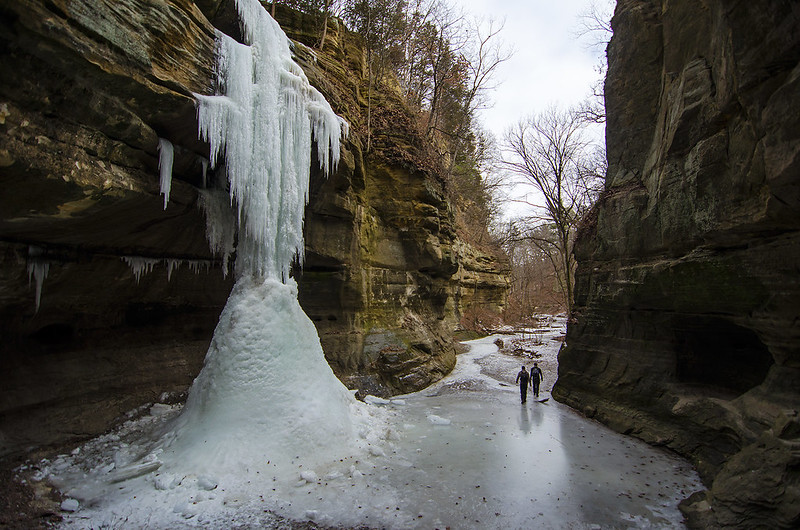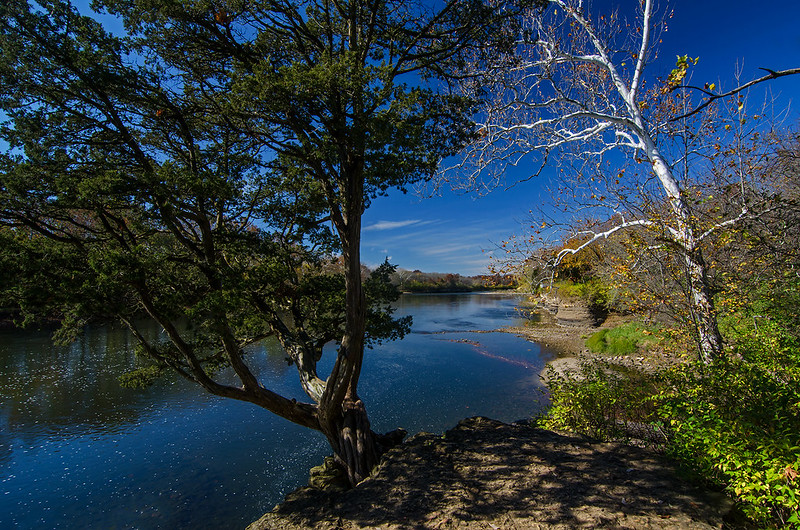 >
>The 80 foot tall waterfall in Wildcat Canyon has once again frozen solid. Wildcat is one of Starved Rock State Park's many canyons, but one of the few where one can view the canyon from almost every direction, top to bottom. Many of the canyons are accessible from the floor only, but Wildcat gives visitors the ability to view into the canyon, from high above.
I've often seen ice climbers at this frozen waterfall, testing their skills with melt water pouring down on them as they climb. At 80 feet, this is quite a challenging climb.

With a bit of determination, I managed to climb up the icy rock onto the canyon shelf behind the icefall, for a unique look up at the falls and the canyon ceiling.

Up close, the intricate patterns of ice come into view. With every drop of water from above, tiny icicles form on top of each other, from the overhang, and from the ground, until the lacy ice interlocks and forms the giant icefall.

Wildcat Canyon is one of the easiest canyons to reach at Starved Rock State Park. It's rather close to the visitor center, and the trail from the lodge is fairly flat and easy. Be prepared for plenty of stairs if you plan on heading down to the floor of the canyon.


























